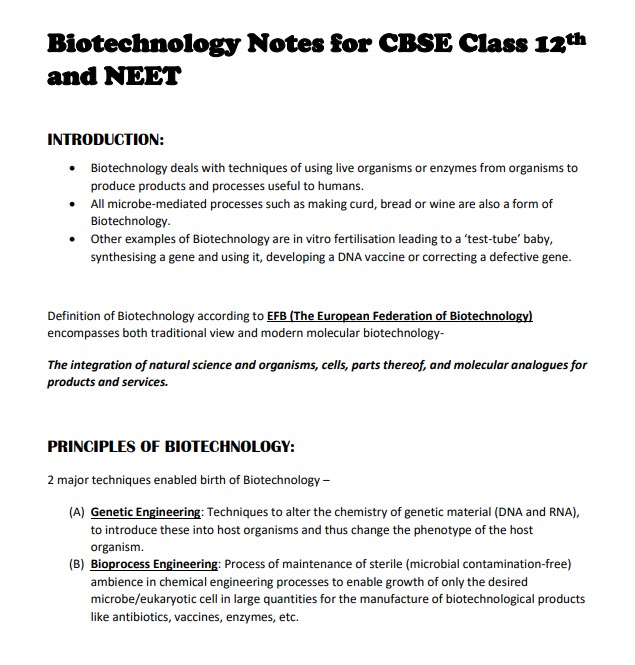Biotechnology Notes for CBSE Class 12th and NEET
Summary:
Coaching classes that specialize in biology and biotechnology for competitive exams provide notes on genetic engineering and bioprocess engineering. The notes discuss the key tools required for genetic engineering, such as restriction enzymes, polymerase enzymes, ligases, vectors, and host organisms. Recombinant DNA technology involves multiple processes, including isolation of pure DNA, cutting DNA with restriction enzymes, amplification of the gene of interest using PCR, insertion of recombinant DNA into the host organism, obtaining the foreign gene product, and downstream processing. Quality control techniques such as agarose gel electrophoresis and bioreactors are used to optimize the expression of the foreign gene product.
Excerpt:
Biotechnology Notes for CBSE Class 12th and NEET
INTRODUCTION:
• Biotechnology deals with techniques of using live organisms or enzymes from organisms to
produce products and processes useful to humans.
• All microbe-mediated processes such as making curd, bread, or wine are also a form of Biotechnology.
• Other examples of Biotechnology are in vitro fertilization leading to a ‘test-tube’ baby, synthesizing a gene and using it, developing a DNA vaccine, or correcting a defective gene
The definition of Biotechnology according to EFB (The European Federation of Biotechnology) encompasses both traditional views and modern molecular biotechnology.
The integration of natural science and organisms, cells, parts thereof, and molecular analogs for products and services.
PRINCIPLES OF BIOTECHNOLOGY:
2 major techniques enabled the birth of Biotechnology:
(A) Genetic Engineering: Techniques to alter the chemistry of genetic material (DNA and RNA), to introduce these into host organisms and thus change the phenotype of the host organism.
(B) Bioprocess Engineering: Process of maintenance of sterile (microbial contamination-free) ambiance in chemical engineering processes to enable the growth of only the desired microbe/eukaryotic cells in large quantities for the manufacture of biotechnological products like antibiotics, vaccines, enzymes, etc.
- Traditional hybridization procedures used in plant and animal breeding, very often
lead to the inclusion and multiplication of undesirable genes along with the desired
genes. - …….


Reviews